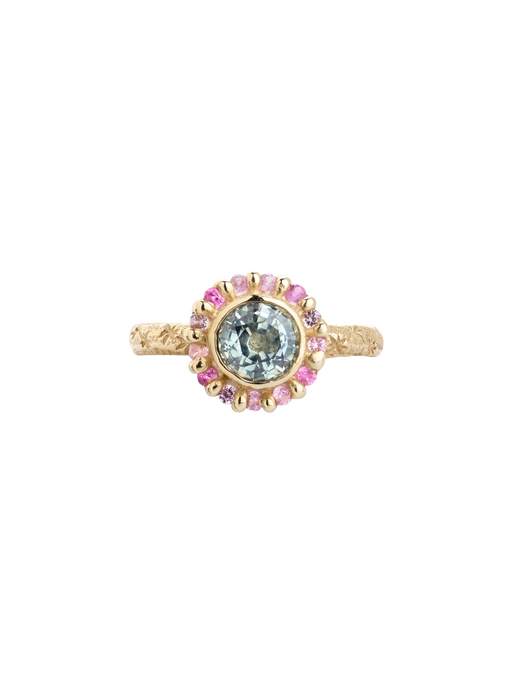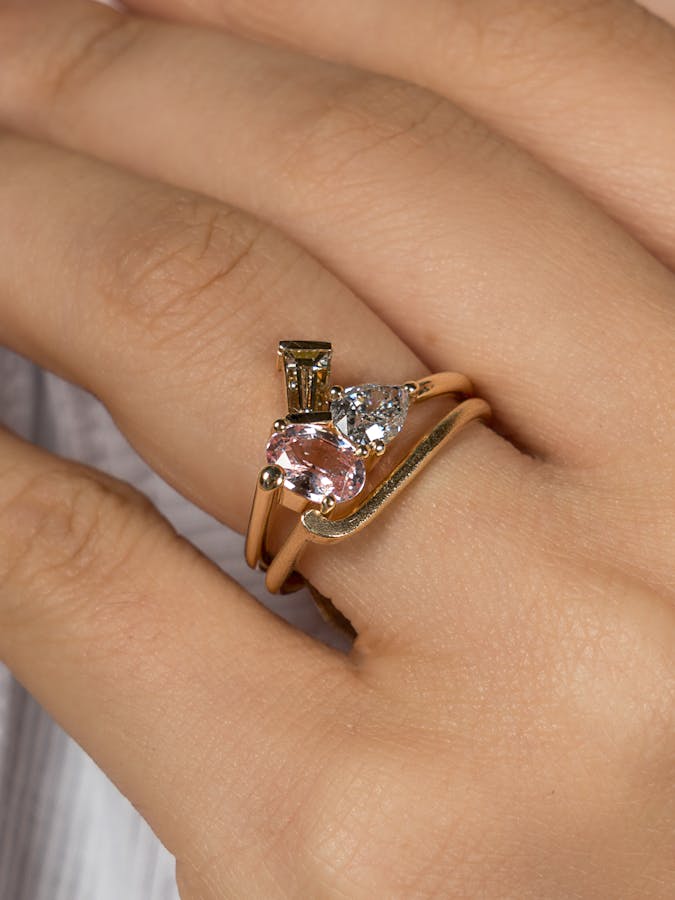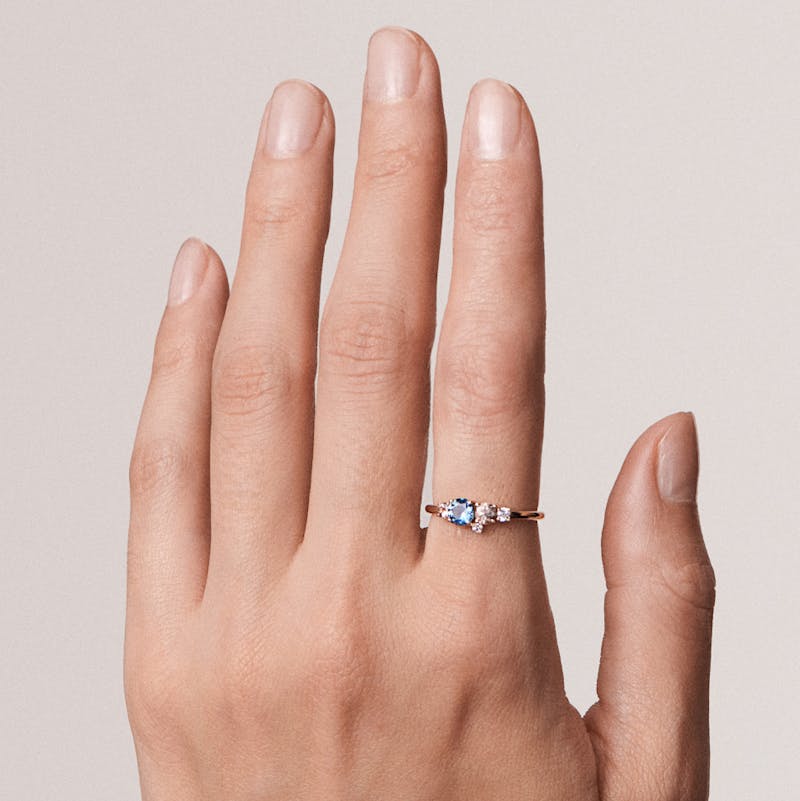Metals for engagement rings
.jpg?ixlib=gatsbyFP&auto=compress%2Cformat&fit=max&rect=0%2C511%2C1536%2C1536&w=800&h=800)
What metal you choose for an engagement ring is one of the most important considerations when buying an engagement ring. While yellow gold may be the most popular metal for engagement rings, it is not the only metal you can choose.
And even if you are set on buying a gold engagement ring, there are some things to consider: the colour, karat and finish all influence the overall look of an engagement ring.
Here, we tell you what you need to know about the different precious metal types to consider when buying an engagement ring.
GOLD
One of the most obvious metal choice, gold is a durable precious metal that will look good with most gemstones and designs.
Yellow gold
The classic look of yellow gold is popular for engagement. It’s not hard to understand why: yellow gold goes well with diamonds, as well as complementing most gemstones.
However, yellow gold is relatively soft, so it will show wear - small dents and scuffs in the metal that appear with every day wear. Some people like this look, as it can be a visual reminder of the passing years.
Hardness: Soft
Scratch resistant: No
Gemstone settings: Secure
Upkeep: Can be repolished to remove surface scratches if needed
Resizable: Yes
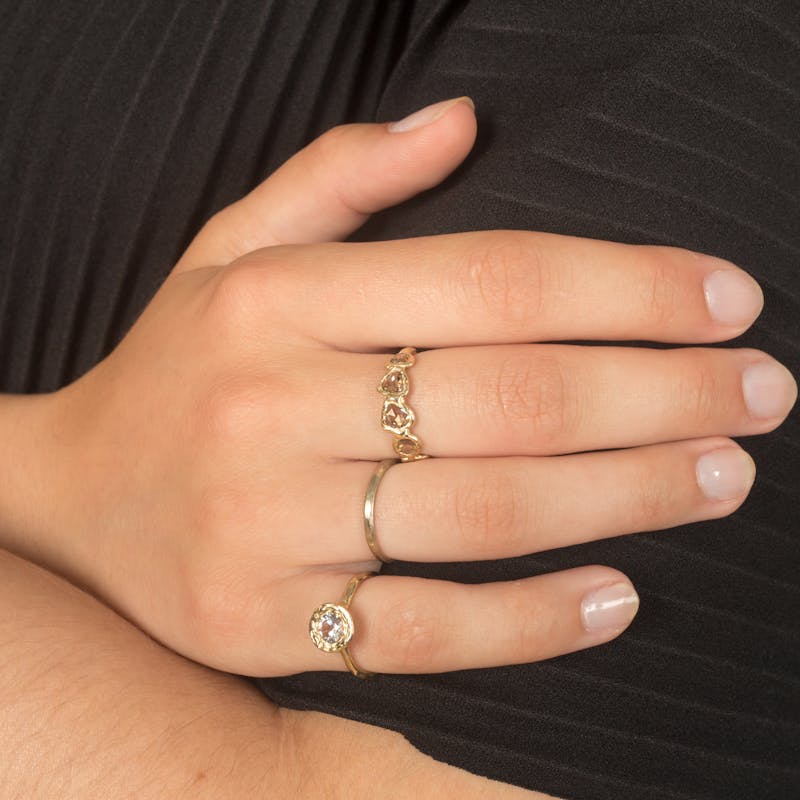
White gold
White gold is also an alloy, which means it’s yellow gold mixed with other metals.
White gold is always rhodium-plated, which requires upkeep as the gold underneath may start to show with constant wear, making the ring look slightly dull.
How often you need to get a white gold ring re-dipped varies on the thickness of the original plating and how it’s cared for, but it may need to be replated every couple of years.
Hardness: Soft
Scratch resistant: No
Gemstone settings: Secure
Upkeep: Will need replating every couple of years
Resizable: Yes
Rose gold
Rose gold is strong and doesn’t need rhodium plating, as it has the same properties as yellow gold.
Rose gold is an alloy of gold and copper, which may cause allergies. This is very rare, but still something to keep in mind and test, if you’re in doubt.
The copper in rose gold may become a bit redder over time and slightly change the colour of your ring. This is something that many find attractive as it shows the passing of time.
Hardness: Soft
Scratch resistant: No
Gemstone settings: Secure
Upkeep: Can be repolished to remove surface scratches if needed
Resizable: Yes
Karats
Gold karat is not to be confused with diamond carat.
You may think the higher the karat, the better when it comes to gold for an engagement ring. But this is not the case. For example, 24 karats, - pure gold – is too soft for jewellery. It easily bends, scratches and gemstones may fall out.
To get a lower and therefore more durable karat of gold, pure gold is mixed with an alloy. This makes the metal stronger and is a better choice for an engagement ring.
14 or 18 karats are good options for everyday wear, as the metal will be strong enough to withstand some bashing and will retain a deep, beautiful colour. 9 karats gold is highly durable and affordable but will feel lighter and will have a paler gold colour.
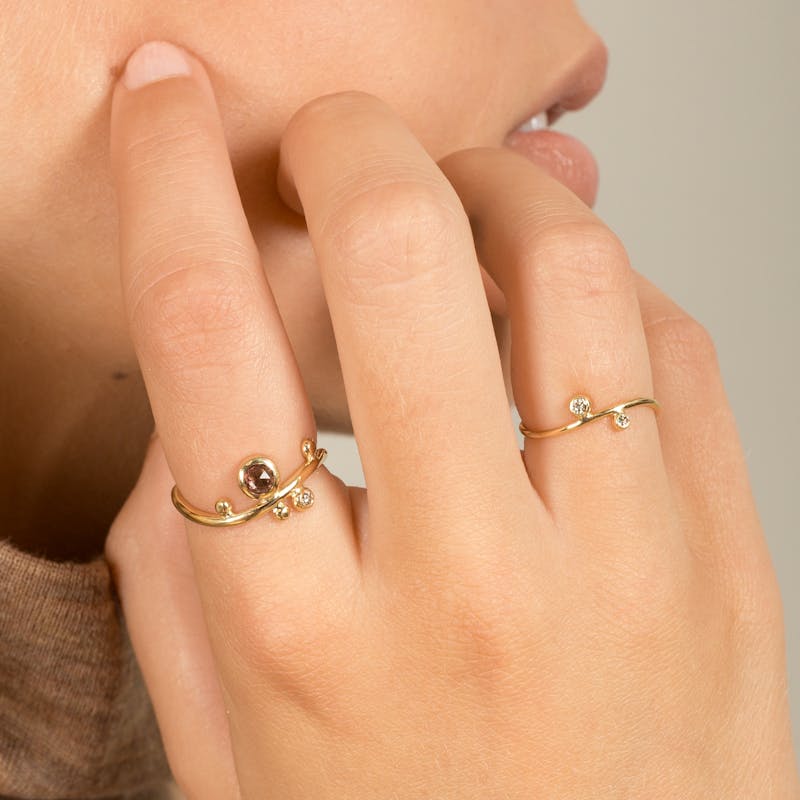
PLATINUM
One of the strongest precious metals, platinum, is also one of the rarest metals in the world. White gold was created when platinum was taken off the market to conserve supplies for war.
Prongs are usually made of platinum when less resistant metals are used for a ring, so as to keep gemstones in place securely.
A platinum engagement ring is one of most durable choice you can make. But of course, it comes with a price. When buying an engagement ring, consider whether the longevity of the metal is worth the higher price tag for you.
The naturally white metal will not fade or oxidise, but it will develop a patina and look “duller” in time.
Platinum is also heavier than gold, roughly 30%, which will make your ring feel “real” and heavy, but may need getting used to if you’re not used to wearing jewellery.
Hardness: Hard
Scratch resistant: No
Gemstone settings: Secure
Upkeep: Polish every few years to keep it looking new
Resizable: Yes
PALLADIUM
For a look similar to platinum without the price, palladium is a good alternative.
Lightweight, it is extremely durable but will show scratches and is difficult to resize.
This white metal is a lot lighter than platinum for a similar durability. While it does not tarnish, it may be limiting in terms of designs as less engagement rings are available in this material.
Hardness: Hard
Scratch resistant: No
Gemstone settings: Secure
Upkeep: Can be repolished to remove surface scratches if needed
Resizable: Yes
TITANIUM
Strong and lightweight, silver-grey titanium is a scratch resistant, easy to maintain metal. It is also corrosion-resistant. However, it isn’t easy to resize, something to keep in mind when looking at metal options for an engagement ring.
Like palladium, this is not a traditional engagement ring’s metal and you may find your choice of designs limited when looking for a titanium engagement ring.
Hardness: Hard
Scratch resistant: Yes
Gemstone settings: Secure
Upkeep: None
Resizable: No
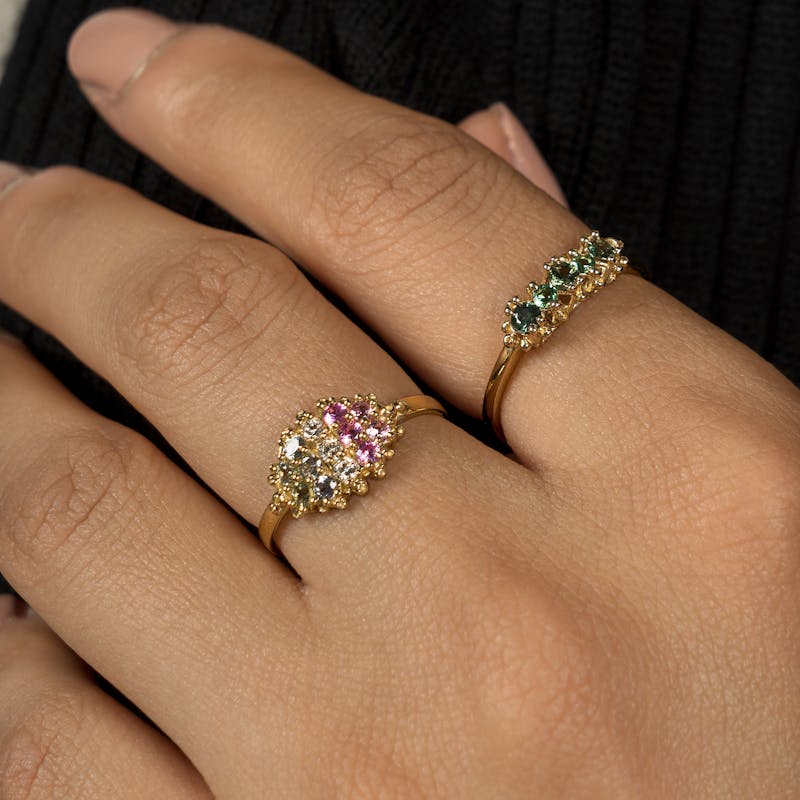
TUNGSTEN
The most durable metal, grey or black tungsten is four times stronger than titanium. While this may seem like the best metal for an engagement ring, it is worth noting that while tungsten doesn’t tarnish, it is brittle and can break if dropped of knocked.
Rings made of tungsten carbide – a compound of tungsten and carbon – cannot be resized.
You can also plate tungsten carbide for a more traditional look. However, it may be easier to buy a gold ring and not have to worry about cracking a tungsten ring if you’re after a yellow metal.
Hardness: Very Hard
Scratch resistant: Yes
Gemstone settings: Secure
Upkeep: None
Resizable: No
COBALT
Naturally white, cobalt is an alloy of cobalt and other metals such as chromium, tungsten or iron. This alloy is four times harder than platinum. If you’re wondering if cobalt is a good metal for rings, the answer is yes. It is easy to resize and is fairly scratch-resistant.
However, scratch-resistant does not mean cobalt can’t scratch, and unfortunately, once it does show wear, cobalt can’t be refinished like gold and platinum can, so you will have to live with a ring that eventually shows wear.
Hardness: Very Hard
Scratch resistant: Yes
Gemstone settings: Secure
Upkeep: None
Resizable: No
SILVER
Pure silver, just like pure gold, is too soft to use for jewellery. Sterling silver is pure silver mixed with other metals to make it stronger.
However, sterling silver is still softer and less durable than gold or any other choices on this list. It requires the most upkeep and shows scratches, needs to be repolished and will tarnish with wear.
Silver can be bent out of shape fairly easily, but may be a good option if you’re on a tight budget.
Rhodium plating sterling silver can enhance the reflection and will protect an engagement ring from tarnishing.
Hardness: Extremely Soft
Scratch resistant: No
Gemstone settings: Secure
Upkeep: Will tarnish and need to be repolished, can be bent
Resizable: Yes
Recycling
Metals are easy to recycle and a lot of the gold – and silver – used in jewellery is recycled.
Even if your jeweller doesn’t mention recycled metals, chances are, it probably is.
All of the metals on this list are precious metals that can be recycled.
There are many metal options to choose from when buying an engagement ring. From the popular, like yellow gold, to the slightly more obscure, such as tungsten or cobalt.
There are no right or wrong choices when it comes to engagement rings. If you and your partner love the look and feel of a metal, go for it! An engagement ring is a unique representation of your partnership and should align with your values, taste and style.
